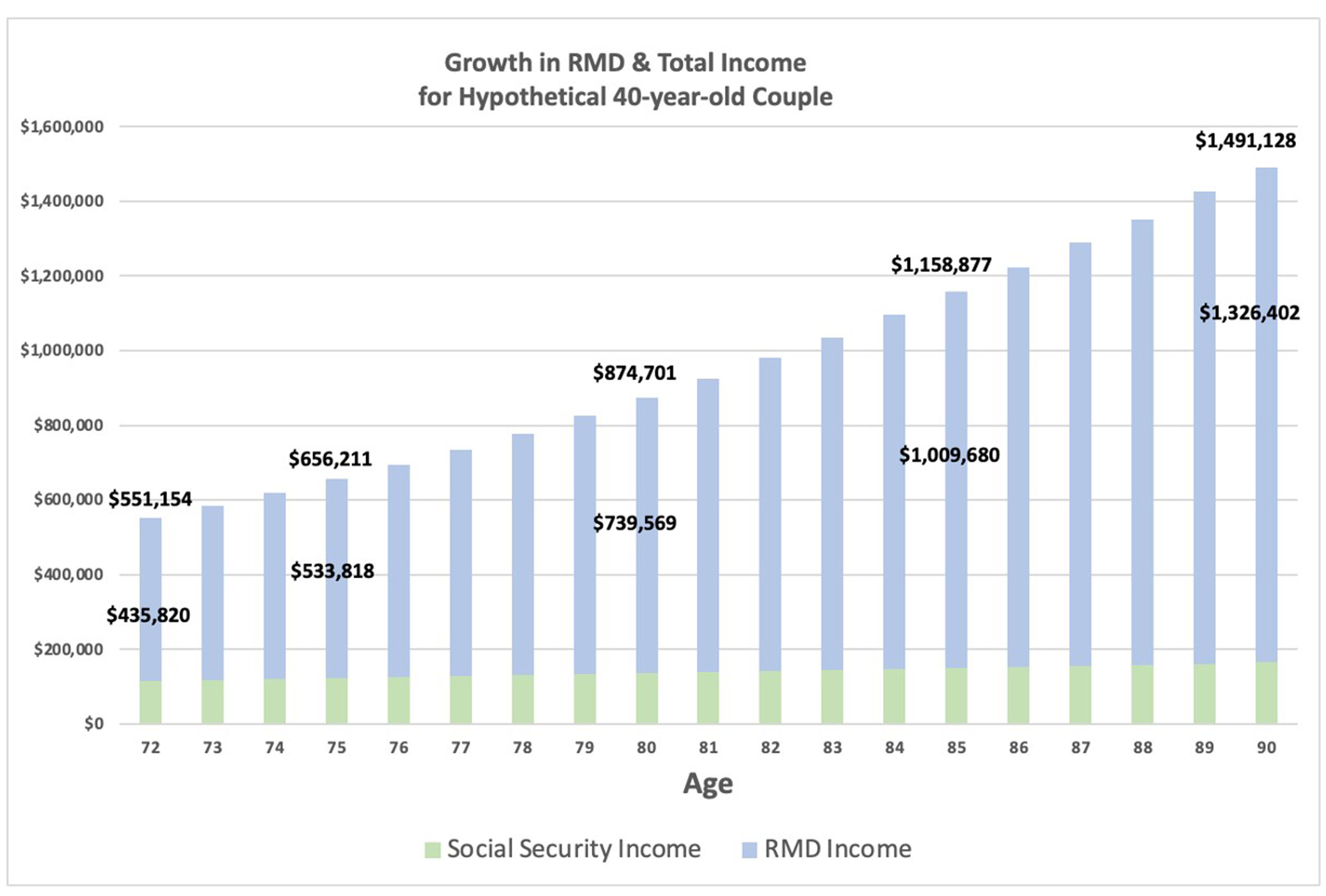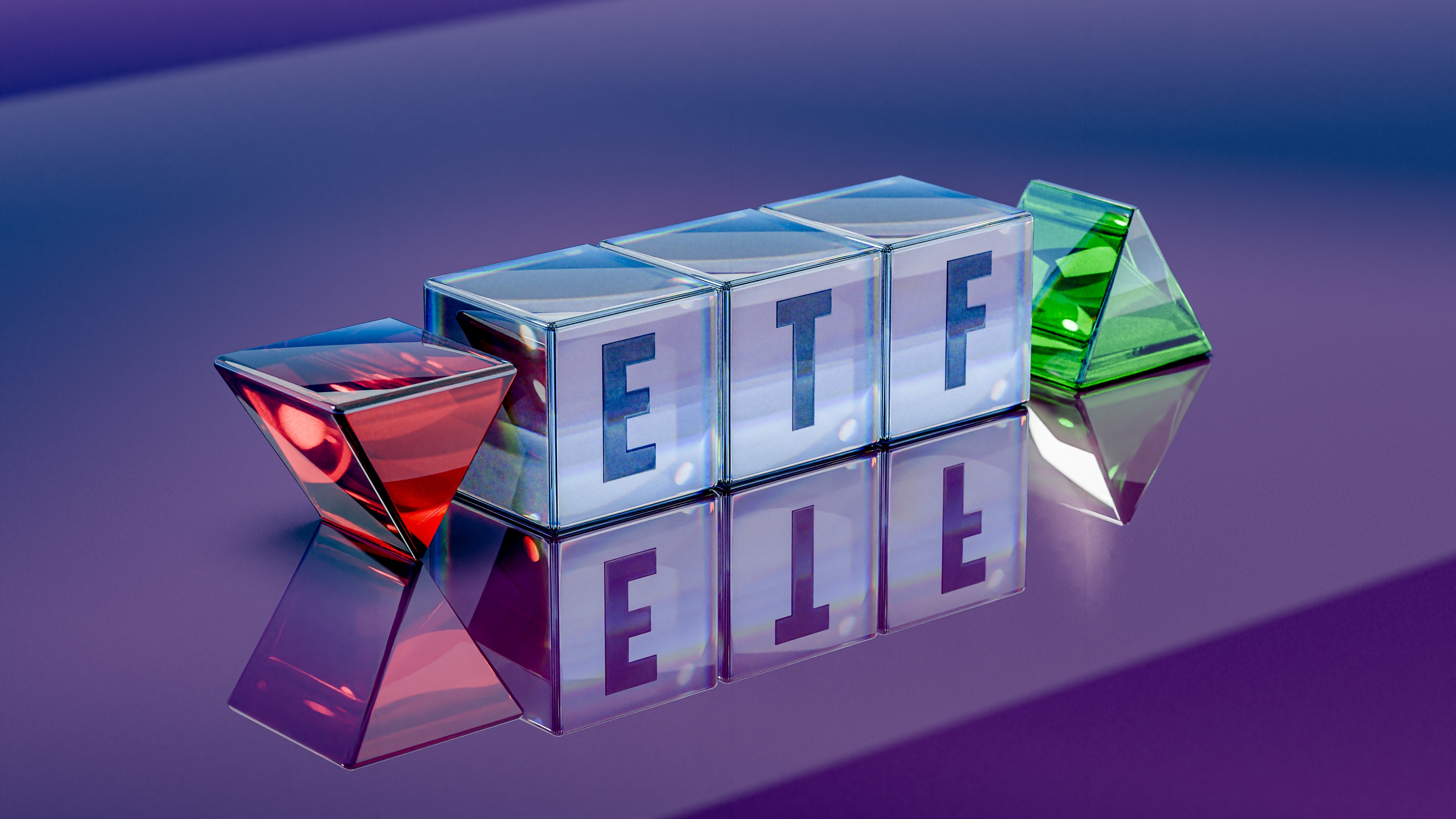When It Comes to Your RMDs, Be Very, Very Afraid!
If you’ve saved heavily in a traditional IRA or 401(k) you may feel great about your retirement savings now, but your required minimum distributions can be frighteningly large in retirement. And the tax bill they generate can be even scarier.


Editor’s note: This is part two of a seven-part series on retirement tax bombs. It dives more deeply into how required minimum distributions (RMDs) from tax-deferred savings can become a snowballing tax liability in retirement. If you missed the introductory article, you may find it helpful to start here.
For the remaining articles in this series, I’ll use a case study of a couple aged 40 who has saved $500,000 combined in pre-tax retirement accounts. Presumably, this couple is tracking well for a secure retirement. After maxing out their retirement plan contributions, they may not have much cash flow left over and may feel like they’re barely making ends meet. I meet couples like this all time. They aren’t rich, they’re simply good savers doing exactly what conventional wisdom has taught them to do.
The couple keeps making the maximum contribution each year ($20,500 each through age 49, then $27,000 from age 50 to 64, which are the current maximums), and each get a $6,000 employer match. I assume contribution limits rise by 2% annually. The couple’s contributions are in growth allocations that earn an annual 7% return. By the time they retire on their 65th birthdays, their retirement accounts will have grown to an impressive $7.3 million! They’re in great shape, right?
From just $107.88 $24.99 for Kiplinger Personal Finance
Be a smarter, better informed investor.

Sign up for Kiplinger’s Free Newsletters
Profit and prosper with the best of expert advice on investing, taxes, retirement, personal finance and more - straight to your e-mail.
Profit and prosper with the best of expert advice - straight to your e-mail.
Snowballing RMD Income
For simplicity, let’s assume they don’t draw down their pre-tax savings early in retirement, so their tax-deferred savings grows to about $11.9 million by age 72, when they must take their first RMD, which is $435,820. The RMD is 100% taxable, at their ordinary income rate, and by itself may put them in a high tax bracket. As you can see in the chart below, the RMD grows to $533,818 at age 75, $739,569 at age 80, $1 million at age 85 and $1.3 million at age 90.
The RMD income dwarfs their annual Social Security income, which I assume at $36,000 each at age 67, with a 2.0% annual cost of living adjustment.
Most people assume their taxable income in retirement will be very low because they’re not working, and will be receiving only Social Security benefits and perhaps some interest and dividend income. But clearly, if you’ve saved a lot in tax-deferred accounts, your RMD income can be frighteningly large. Meet your retirement tax bomb.

Even though the couple would take $15.6 million in total RMDs from age 72 to 90, their tax liability keeps growing, although at a decreasing rate as the RMDs gets larger. It’s not until age 89 that the RMD exceeds the projected portfolio growth and the tax liability starts shrinking.
Future Tax Rates
As scary as this sounds, think about where future tax rates may be headed. Current tax rates are near historical lows and may be the lowest we'll see for the rest of our lives. Consider solvency issues with Social Security and Medicare, chronic infrastructure issues, exploding deficits, climate change and pandemics. Each of these issues in isolation will require a lot of money to solve. And that doesn't even account for potential policy changes that would tax the wealthy more.
Simply put, paying taxes at today’s low rates may be a bargain compared to deferring, and growing, your tax liabilities into the future.
My next article focuses on problem No. 2: Medicare means testing surcharges.
- Part 1: Is Your Retirement Portfolio a Tax Bomb?
- Part 2: When It Comes to Your RMDs, Be Very, Very Afraid!
- Part 3: RMDs Can Trigger Massive Medicare Means Testing Surcharges
- Part 4: Will Your Kids Inherit a Tax Bomb from You?
- Part 5: How to Defuse a Retirement Tax Bomb, Starting With 1 Simple Move
- Part 6: Using Asset Location to Defuse a Retirement Tax Bomb
- Part 7: Roth Conversions Play Key Role in Defusing a Retirement Tax Bomb
- Bonus article 1: 2 Ways Retirees Can Defuse a Tax Bomb (It’s Not Too Late!)
- Bonus article 2: Can My Pension Trigger a Retirement Tax Bomb?
Profit and prosper with the best of Kiplinger's advice on investing, taxes, retirement, personal finance and much more. Delivered daily. Enter your email in the box and click Sign Me Up.

David McClellan is a partner with Forum Financial Management, LP, a Registered Investment Adviser that manages more than $7 billion in client assets. He is also VP and Head of Wealth Management Solutions at AiVante, a technology company that uses artificial intelligence to predict lifetime medical expenses. Previously David spent nearly 15 years in executive roles with Morningstar (where he designed retirement income planning software) and Pershing. David is based in Austin, Texas, but works with clients nationwide. His practice focuses on financial life coaching and retirement planning. He frequently helps clients assess and defuse retirement tax bombs.
-
 The Original Property Tax Hack: Avoiding The ‘Window Tax’
The Original Property Tax Hack: Avoiding The ‘Window Tax’Property Taxes Here’s how homeowners can challenge their home assessment and potentially reduce their property taxes — with a little lesson from history.
-
 Is Mint Mobile's Home Internet a Game-Changer or Just Another Option?
Is Mint Mobile's Home Internet a Game-Changer or Just Another Option?Mint Mobile recently unveiled its new home internet service. We break down how it works so you can determine if it's a great value for your needs.
-
 Five Downsides of Dividend Investing for Retirees, From a Financial Planner
Five Downsides of Dividend Investing for Retirees, From a Financial PlannerCan you rely on dividend-paying stocks for retirement income? You'd have to be extremely wealthy — and even then, the downsides could be considerable.
-
 I'm a CPA: Control These Three Levers to Keep Your Retirement on Track
I'm a CPA: Control These Three Levers to Keep Your Retirement on TrackThink of investing in terms of time, savings and risk. By carefully monitoring all three, you'll keep your retirement plans heading in the right direction.
-
 Debunking Three Myths About Defined Outcome ETFs (aka Buffered ETFs)
Debunking Three Myths About Defined Outcome ETFs (aka Buffered ETFs)Defined outcome ETFs offer a middle ground between traditional equity and fixed-income investments, helping provide downside protection and upside participation.
-
 This Is Why Judge Judy Says Details Are Important in Contracts: This Contract Had Holes
This Is Why Judge Judy Says Details Are Important in Contracts: This Contract Had HolesA couple's disastrous experience with reclaimed wood flooring led to safety hazards and a lesson in the critical importance of detailed contracts.
-
 A Lesson From the School of Rock (and a Financial Adviser) as the Markets Go Around and Around
A Lesson From the School of Rock (and a Financial Adviser) as the Markets Go Around and AroundIt's hard to hold your nerve during a downturn, but next time the markets take a tumble, remember this quick rock 'n' roll tutorial and aim to stay invested.
-
 I'm a Financial Pro: This Is How You Can Guide Your Heirs Through the Great Wealth Transfer
I'm a Financial Pro: This Is How You Can Guide Your Heirs Through the Great Wealth TransferFocus on creating a clear estate plan, communicating your wishes early to avoid family conflict, leaving an ethical will with your values and wisdom and preparing them practically and emotionally.
-
 To Reap the Full Benefits of Tax-Loss Harvesting, Consider This Investment Strategist's Steps
To Reap the Full Benefits of Tax-Loss Harvesting, Consider This Investment Strategist's StepsTax-loss harvesting can offer more advantages for investors than tax relief. Over the long term, it can potentially help you maintain a robust portfolio and build wealth.
-
 Social Security Wisdom From a Financial Adviser Receiving Benefits Himself
Social Security Wisdom From a Financial Adviser Receiving Benefits HimselfYou don't know what you don't know, and with Social Security, that can be a costly problem for retirees — one that can last a lifetime.